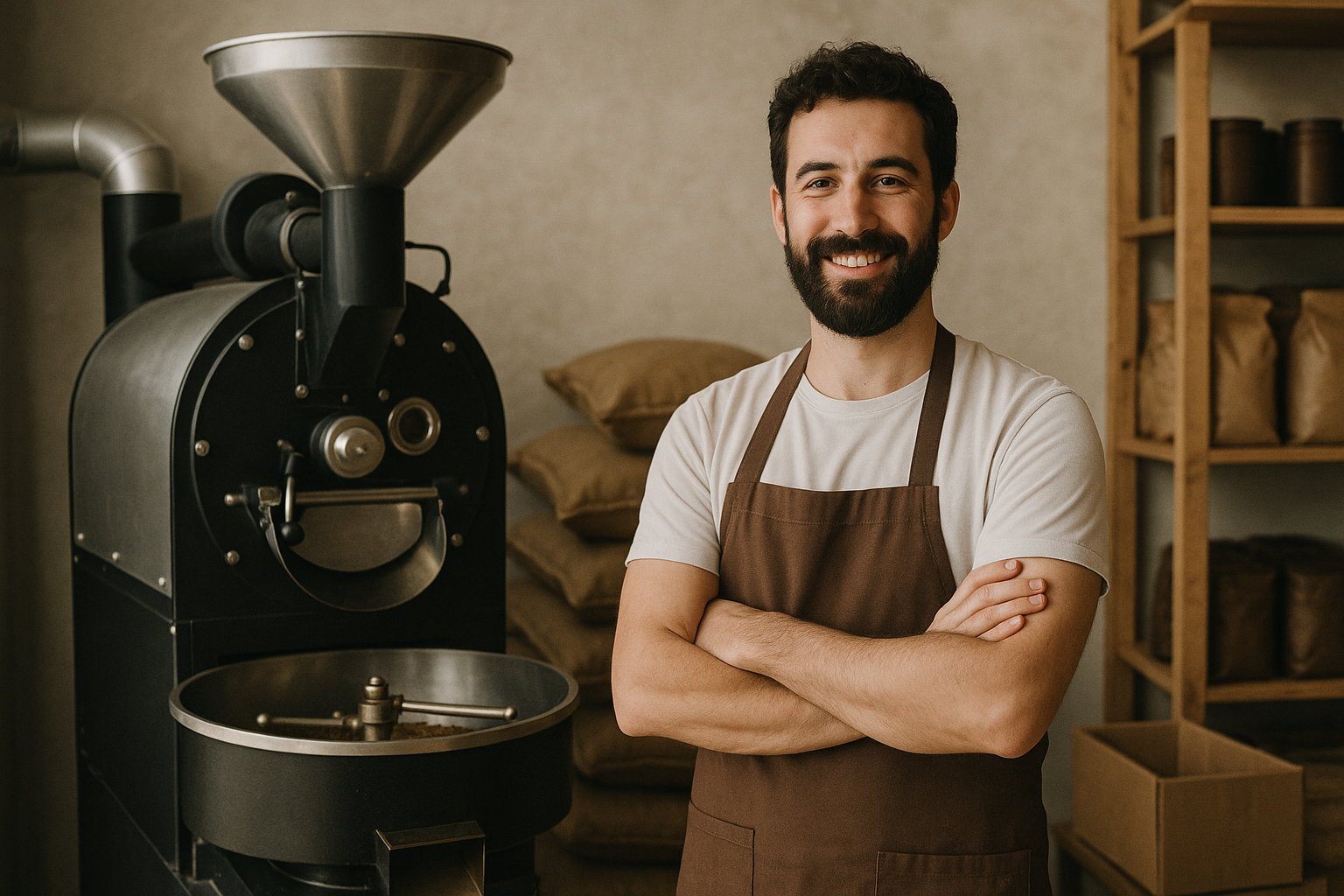Many baristas and coffee lovers start their entrepreneurial journey with a side hustle. Maybe you roast beans in small batches at home.
Maybe you run a weekend pop-up or serve cold brew at local markets. Maybe you’ve built a small subscription list or host virtual brewing classes.
At first, it’s a way to earn extra income and explore your passion. But as sales grow, you begin to wonder: Could this become my full-time career?
The good news is yes — it’s possible. Many coffee entrepreneurs have transformed part-time projects into thriving businesses. The challenge is scaling in a way that’s sustainable, profitable, and aligned with your goals.
This expanded guide will show you how to take your coffee side hustle from a passion project to a full-time business, step by step.
Step 1: Define What Success Means for You
Scaling isn’t just about making more money. It’s about creating a business that matches your lifestyle and long-term vision.
For some, success means owning a cozy neighborhood café. For others, it’s running multiple coffee carts across the city. Some prefer to sell beans online and work from home, while others dream of becoming coffee educators or consultants.
Write down your vision. Do you want stability, creativity, flexibility, or growth at scale? Knowing this will help you make smart choices about where to invest your time and money.
Step 2: Solidify Your Foundation
Before scaling, make sure your side hustle is stable. If your processes are inconsistent, growth will only magnify the chaos.
Ask yourself these questions:
- Are my products consistently high-quality?
- Do I have repeat customers, not just one-time buyers?
- Can I deliver orders or run events without major stress?
- Is my brand identity clear and recognizable?
If you can confidently answer yes, you’re ready to start growing. If not, focus on stabilizing first. Consistency is the base of scalability.
Step 3: Get Serious About Numbers
Dreams are motivating, but numbers make scaling possible. Treat your side hustle like a business, even if it’s still small.
Track your finances carefully:
- Revenue: How much do you earn each month?
- Expenses: Ingredients, packaging, permits, equipment, marketing.
- Profit margins: Are you charging enough to grow sustainably?
- Break-even point: How many units do you need to sell to cover costs?
Once you know your numbers, calculate how much you’d need to replace your current salary. This gives you a realistic financial target for going full-time.
Step 4: Strengthen Your Brand Identity
As you grow, your brand becomes your biggest asset. People don’t just buy coffee — they buy into your story, values, and vibe.
Invest time into refining your brand:
- A clear and memorable logo.
- Consistent color palette and typography.
- A voice that feels authentic (fun, educational, minimalist, or cozy).
- Packaging that communicates professionalism and trust.
Strong branding builds loyalty and attracts new customers without constant advertising. It also makes scaling easier because your brand will stand out in crowded markets.
Step 5: Expand Your Capacity Without Burning Out
Scaling requires serving more people without doubling your personal workload. This means creating systems, hiring help, or upgrading equipment.
Practical strategies include:
- Upgrading from manual grinders to commercial models.
- Renting commissary kitchens or roasting spaces to increase output.
- Hiring part-time staff for markets or delivery.
- Creating checklists and SOPs (standard operating procedures) for repeat tasks.
The goal is to free your time from repetitive labor so you can focus on strategy, growth, and customer experience.
Step 6: Diversify Revenue Streams
Depending on one income source is risky. A single slow month at markets or a broken-down coffee cart could hurt your business.
Add revenue streams that complement your existing hustle:
- If you sell beans, add brewing gear, mugs, or subscriptions.
- If you run a cart, bottle cold brew for wholesale.
- If you teach classes, create online courses or e-books.
Diversification spreads risk and creates multiple ways to earn, making full-time income more stable.
Step 7: Build Partnerships and Collaborations
Partnerships help you grow faster without big marketing budgets. They also connect you with new communities.
Ideas for collaborations:
- Partner with a bakery for bundled deals.
- Host pop-ups inside bookstores or co-working spaces.
- Create co-branded drinks with local chocolatiers or breweries.
- Supply offices or gyms with your coffee.
These partnerships bring exposure and credibility, while reducing costs through shared resources.
Step 8: Level Up Your Marketing
Scaling requires more visibility. If people don’t know you exist, they can’t buy from you. But marketing doesn’t have to be expensive.
Focus on consistency:
- Post engaging content on Instagram and TikTok.
- Share behind-the-scenes stories and customer testimonials.
- Build an email list for promotions and updates.
- Use simple ads (even $5/day) to target local audiences.
The more people see your brand, the more opportunities you’ll have to convert them into loyal customers.
Step 9: Manage Your Time Like a Pro
Scaling while still working another job can feel overwhelming. Protect your energy and focus by managing your time carefully.
Tips to stay productive:
- Use batching: dedicate one day to roasting, one to packaging, one to content.
- Automate repetitive tasks like social media posting or invoicing.
- Say no to opportunities that don’t align with your vision.
- Schedule rest to avoid burnout — tired entrepreneurs make bad decisions.
Remember: scaling isn’t about doing more, it’s about doing smarter.
Step 10: Know When to Make the Leap
At some point, you’ll need to move from side hustle to full-time. This decision is scary, but there are signs that you’re ready:
- Your side hustle income consistently reaches 60–80% of your salary.
- You have a loyal base of repeat customers.
- You can see clear growth opportunities if you dedicate more time.
- You feel excited about expansion, not just stressed.
When the time comes, plan your transition. Build a financial cushion, inform your employer respectfully, and step confidently into entrepreneurship.
Step 11: Continue Learning and Adapting
Scaling isn’t a straight line. There will be challenges — slow months, failed products, or unexpected costs. The key is to stay flexible.
Learn from feedback. Improve your systems. Pivot when needed. The most successful coffee entrepreneurs are the ones who adapt fastest.
Invest in your education as well. Attend coffee expos, take business courses, or connect with mentors. Growth requires constant learning.
Step 12: Think Long-Term
Once you’ve scaled to full-time, don’t stop there. Think about the bigger picture:
- Can you open a second cart or shop?
- Can you build wholesale partnerships?
- Can you create digital products for passive income?
- Can you hire a team and step into a leadership role?
The long-term vision gives your daily work meaning and direction.
Final Thoughts: From Side Hustle to Sustainable Business
Scaling your coffee side hustle into a full-time career is possible, but it takes patience, strategy, and resilience.
Start by stabilizing what you already do well. Strengthen your brand and know your numbers. Expand your capacity, diversify income streams, and build partnerships. Market consistently and manage your time wisely.
When the moment is right, make the leap. Trust your skills, your systems, and your vision.
Remember — every thriving coffee business you admire started small. What matters is taking the next step and building momentum.
With dedication and strategy, your side hustle won’t just fund your passion. It will become the foundation of your full-time life.

Marcelo Rodrigues is a passionate barista with over 7 years of experience in specialty coffee. He’s worked in top cafés, led barista training sessions, and now shares practical tips to help beginners and coffee lovers improve their skills. Through this blog, Marcel makes the world of coffee more accessible—one cup at a time.

